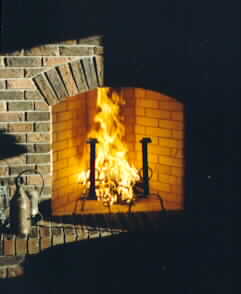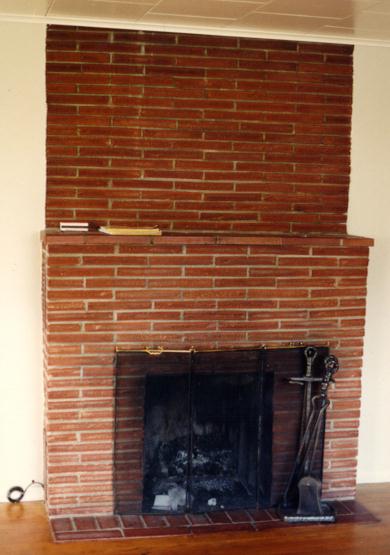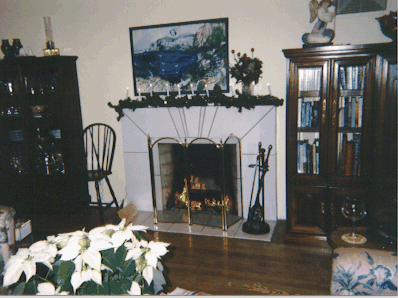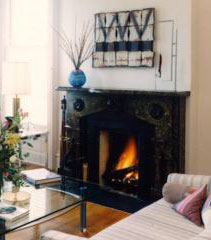(How hard can it be? Who better than Me?)
by Jim Buckley, 6/7/03
  "Rumfordizing" a 1970's Fireplace
"Rumfordized" Fireplaces |
Some sweeps are masons too, perhaps starting with minor repairs - repointing a firebox, casting a new chimney crown, installing a new damper. Some have experience in relining chimneys. More than any other profession, sweeps are trained in the safety and code issues affecting fireplaces and chimneys. How hard can it be to rebuild an existing fireplace - and who would be better trained than a sweep? Re-building, improving or Rumfordizing an existing fireplace can be fairly complex and require a variety of skills like brick laying, plastering, carpentry and plumbing as well as knowing the safety and code issues. And it would be good to be a student of history. The most important skill, however, has to be managerial judgement - knowing what's safe and knowing when you need help. If you are a sweep and already know a bit about masonry repair and/or lining chimneys, this article is for you. We're going to talk about fireplace and chimney construction in an historical context, about knowing when to repair or rebuild and knowing how to improve the performance of a fireplace. We're going to touch on some code and safety issues but we will assume a professional understanding of modern codes and building practices. Finally, we're going to be blunt about liability. |
| To Rebuild a Fireplace | Or NOT to Rebuild |
|
1) Code and Safety Issues - Flue need to be relined, firebox too close to combusibles (especially in back), hearth construction questionable or with combustibles supporting. 2) Restore, update or improve appearance - Often the customer's motivation is to restore an older fireplace to it's original appearance or to get rid of that ugly painted brick and update to a more contemporary look. 3) Improve performance - "Rumfordizing" a fireplace can greatly improve it's efficiency and prevent smoking in some cases but see opposite. 4) Usually the decision to rebuild is made to accomplish several or all of the above objectives. |
1) An old fireplace may not be up to modern code but may be built to an earlier standard and be just as safe. Rebuilding to bring up to modern code may not be justified. 2) Restoring, updating or improving appearance should be considered without rebuilding the fireplace unless the fireplace had been "remudled" especially if the fireplace won't be used. 3) Improving performance is seldom the only reason to rebuild a fireplace and rebuilding the fireplace should not be offered as a cure for smoking problems until an effort has been made to determining the cause of the smoking problem. It could be a simple ventilation problem.
|
|
This article is about "Rumfordizing" - a particular set of instructions for rebuilding or improving fireplaces. This may seem to ignore other methods - and that's true - but justified. Since Rumford published his essays on fireplaces in 1796 and 1798 more fireplaces have been built or improved by following his "directions for workmen" than by any other means. Jefferson improved the fireplaces at Montecello following Rumford's recommendations and soon Rumfords were ubiquitous. Not that everyone agreed or interpreted Rumford's recommendations the same way, but, to date, there has been no demonstrably better fireplace. Rumford is the standard as it was in Colonial times, Victorian times and (for a while almost lost) but now reclaiming the standard in modern times. So, let's see what Rumford recommended. |

Buckley Rumford Fireplaces
Copyright 1995 - 2014 Jim Buckley
All rights reserved.
webmaster



